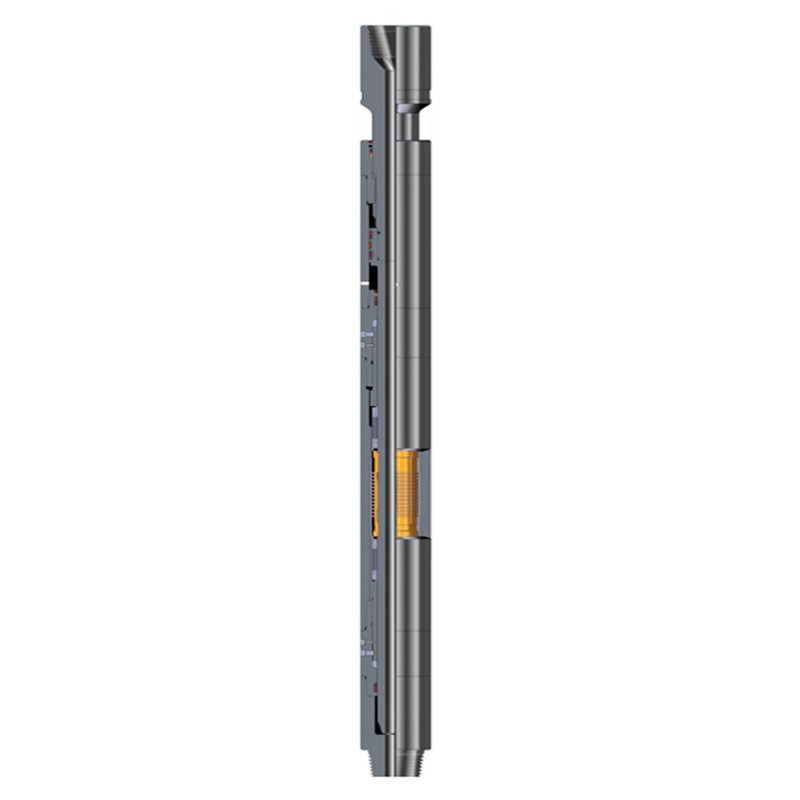Mechanical drilling jars are different from Hydraulic Drilling Jars Operation & Mechanism as it has a preset load setting that must be applied before the jar will fire. They are sensitive to load only and not time. To increase or decrease the jarring tension, the jars must be tripped to the surface, in other words, the string must become unstuck. You might be interested in Drilling Jar Placement & Calculations article.
Mechanical Drilling jars are of two types:-
- Surface set
- Downhole set
Both types operate by converting potential energy (developed by either stretching the drill string ( check also Drill String Design Calculations & Drill string Components )or by slacking off on drill string) and converting this energy into kinetic energy.
A jar comprises an inner mandrel set within an outer sleeve, each of which has an impact surface set approximately 8″ apart (this varies with each manufacturer). Surface set Mechanical Drilling Jars usually have the mandrel and sleeve splined to prevent rotation, subsequently these are unaffected by torque.
A spring-loaded detent pin locates the mandrel in the correct position relative to the outer sleeve, when torque or weight from the drill string overcomes the setting on the detent spring the jar will fire. In the case of a surface set jar only weight will cause it to fire.

Surface Set Jars
As the name implies, the firing load is set on the surface at the well site, but cannot be adjusted downhole. This type of Mechanical Drilling Jar is operated by weight on the drill string only.
This Mechanical Drilling Jar has no internal rotation, it generally operates along splined shafts and is, therefore, suited to directional drilling (check our directional drilling in oil & gas guide)
Advantages
- Simple and rugged in design.
- No hydraulic time delay.
- Still operable after seal failure.
- Trip settings cannot be exceeded, therefore is less chance of damage through operator error
Disadvantages
- Once downhole, no further adjustment of impact load is possible.
- Up jarring impact diminished when circulating.
- Surface pre-set values may be unattainable
Downhole Set Jars
The firing load is pre-set at the workshop but can be influenced by torque applied through the drill string. The hitting force is proportional to that required to trip (check also: Tripping Pipe procedures). the Mechanical Drilling Jar. By applying more or less torque to the drill string the jar can be adjusted to provide a higher or lighter impact load. Lightening the impact load would assist the first firing of the jar in deviated drilling where high torque is preventing the jar from firing. Torque should be applied in small increments until the desired result is obtained, usually a half turn at a time.
Advantages For Downhole Set
- Simple and rugged in design.
- Adjustment of impact load possible. No hydraulic time delay.
- Still operable after seal failure.
- Trip settings cannot be exceeded, therefore is less chance of damage through operator error.
Disadvantages For Downhole Set
- Torque sensitive, so unsuitable for deviated situations.
- Reactive torque when using a motor may prevent the tool from firing.
- Up jarring impact diminished when circulating
Dailey Mechanical Up Jar
The Dailey Mechanical Drilling Jar uses the spring-loaded jay slot and roller triggering mechanism. Applying torque to the spring sets upward and downward triggering forces. If higher tripping loads are required, the operator simply applies right-hand torque to the string.
The mechanical up jar is used in vertical wells or in directional wells with a hole angle of less than 30°. It might also be used as the upper jar when jars are run in tandem.
Advantages of the no-torque mechanical drilling jar include:
- It is time and field-proven
- It has a factory preset tripping load
- The l.i drilling jar is a fully adjustable downhole
- It has a straight push/pull operation
- It trips both up and down
- It re-cocks quickly
- There is no waiting period
- Triggering is not affected by the drilling torque and hole drag.
Disadvantages of the no-torque mechanical drilling jar include that the:
- Triggering load cannot be varied downhole
- The down jar triggering load cannot be set independently of the up jar
- Triggering load
- The maximum available triggering setting is generally less than is available
- With a hydraulic drilling jar.